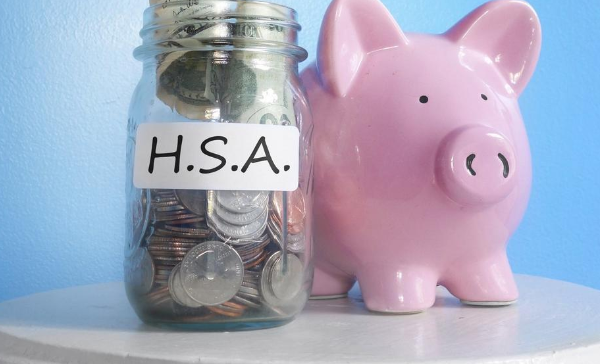
The Departments of Treasury, Health and Human Services, and Labor have published updated indexed benefit and cost-of-living adjustments impacting employee benefit plans. This article offers a high-level overview of the affected items, along with a quick-reference chart for comparison. The new amounts generally apply to plan years beginning on or after Jan. 1, 2025.
Affordable Care Act out-of-pocket maximums
In general, the Affordable Care Act (ACA)’s out-of-pocket maximum (MOOP) limits the amount a consumer must pay for in-network essential health benefits in a plan year. The MOOP includes deductibles, coinsurance and copayments.
| ACA limits | 2024 | 2025 | Change |
| MOOP – self only
MOOP – family |
$9,450
$18,900 |
$9,200
$18,400 |
Decrease of $250
Decrease of $500 |
IRS benefit-specific adjustments
Health flexible spending accounts
Health flexible spending accounts (FSAs) are part of Section 125 Cafeteria Plans under the Internal Revenue Code. Cafeteria plans allow employees to contribute a portion of their paycheck to an FSA on a pretax basis, lowering their taxable income and health care spending. The employer sets the pretax limit (up to the IRS indexed amount), defines eligible expenses and determines what happens to unused dollars at the end of the year. If the FSA plan document allows rollovers, employees’ unused dollars can roll into the next plan year up to the set amount provided in the plan document. The rollover amount can be up to 20% of the FSA contribution limit.
Health savings accounts
Health savings accounts (HSAs) are tax-advantaged personal savings accounts designed for individuals enrolled in eligible high-deductible health plans (HDHPs) to save for medical expenses. An HDHP qualifies if it meets the IRS-required minimum deductible before covering a portion of costs, with a MOOP also set annually by the IRS. This MOOP is different from the ACA MOOP mentioned above.
Employer contributions to an HSA through a Section 125 plan are tax-free. The account’s earnings grow tax-free, and withdrawals for qualified medical expenses are tax-free. Individuals 55 and older can contribute an additional $1,000 to their HSA each year.
Excepted benefit health reimbursement arrangements
Excepted benefit health reimbursement arrangements (EBHRAs) are HRAs specifically for dental and/or vision benefits written under a separate policy from the medical plan.
Qualified small employer health reimbursement arrangements
Qualified small employer health reimbursement arrangements (QSEHRAs) allow small employers to reimburse participating employees tax-free for qualified medical expenses. Qualified medical expenses can include individual health insurance premiums. QSEHRAs give small businesses a flexible, tax-advantaged way to assist employees with health care costs without sponsoring a traditional group medical plan.
Small employers are generally defined as having fewer than 50 full-time and full-time equivalent employees.
Qualified transportation fringe benefits
Qualified transportation fringe (QTF) benefits allow employees to use pretax dollars for commuting expenses. A separate amount is available for qualified parking and public transit/vanpooling.
Adoption assistance programs
Adoption assistance programs are employer-sponsored benefits that provide financial support to employees for eligible adoption-related expenses. These can include agency fees, legal costs and travel expenses.
Dependent care assistance programs
Dependent care assistance programs (DCAPs) allow employees to set aside pretax dollars to cover eligible dependent care expenses. These may include day care, before and after-school programs, and elder care. The current annual contribution limit is $5,000 per household, or $2,500 for married individuals filing separately.
DCAPs are also known as dependent care FSAs.
| Benefit and associated limits | 2024 | 2025 | Change |
| FSA | $3,200 | $3,300 | Increase of $100 |
| FSA rollover | $640 | $660 | Increase of $20 |
| HSA contribution – self only
HSA contribution – family |
$4,150
$8,300 |
$4,300
$8,550 |
Increase of $150
Increase of $250 |
| HDHP deductible – self only
HDHP deductible – family |
$1,600
$3,200 |
$1,650
$3,300 |
Increase of $50
Increase of $100 |
| HDHP MOOP – self only
HDHP MOOP – family |
$8,050
$16,100 |
$8,300
$16,600 |
Increase of $250
Increase of $500 |
| EBHRA | $2,100 | $2,150 | Increase of $50 |
| QSEHRA – self only
QSEHRA – family |
$6,150
$12,450 |
$6,350
$12,800 |
Increase of $200
Increase of $350 |
| QTF | $315 | $325 | Increase of $10 |
| Adoption assistance program | $16,810 | $17,280 | Increase of $470 |
| DCAP | $5,000 | $5,000 | No increase |
ACA “Play or Pay” adjustments
The ACA’s employer shared responsibility (ESR) mandate requires applicable large employers (ALEs) to offer affordable health insurance that meets minimum value to full-time employees. If an employer doesn’t meet the ESR mandate, they may face penalties.
Employers can prove their plans are affordable through one of three “safe harbors”:
- Rate of pay: Based on an employee’s pay rate at the start of the coverage period
- W-2s: Based on an employee’s W-2 gross income (Box 1)
- Federal poverty line: Based on the FPL as the start of the plan year for a one-person household
The affordability safe harbor is indexed each year. An increase in the affordability percentage from one year to the next means employers can shift more of the cost of self-only premiums to employees.
There are two categories of penalties the IRS may assess. The first has to do with the offer of coverage, if any. The second has to do with the tax forms associated with the ESR mandate.
Offer-of-coverage penalties
- No-offerpenalty: This penalty applies if an ALE does not offer coverage to at least 95% of its full-time employees and at least one employee receives a premium tax credit for purchasing coverage through the health insurance marketplace.
- Inadequate offer penalty: This penalty applies if an ALE offers coverage that is either not affordable or does not meet minimum value, and at least one employee receives a premium tax credit.
Tax form penalties
- Failure to furnish penalty: The IRS imposes this penalty if the employer fails to provide health care coverage statements to their employees via Form 1095. The IRS determines the potential penalty based on the number of W-2s submitted for that tax year, regardless of whether the employee should have received a Form 1095.
- Failure to file penalty: The IRS imposes this penalty if the employer fails to provide health coverage data to the IRS via Forms 1094 and 1095. The IRS determines the potential penalty based on the number of W-2s submitted for that tax year and adds 1 to the total to account for the Form 1094 transmittal.
| ACA Employer Mandate | 2024 | 2025 | Change |
| ESR no-offer penalty | $2,970 | $2,900 | Decrease of $70 |
| ESR inadequate offer penalty | $4,460 | $4,350 | Decrease of $110 |
| ESR failure to fine/furnish penalty | $310/form | $340/form | Increase of $30 |
| ESR affordability safe harbor | 8.39% | 9.02% | Increase of 0.63% |
Review your benefit plan to avoid penalties
These updates are designed to help you and your employees better navigate health care and other work-related expenses. Review your benefit plan and contributions to ensure compliance and avoid penalties.
More reading: https://mybendersolutions.com/help-your-employees-unlock-the-long-term-power-of-hsas/


